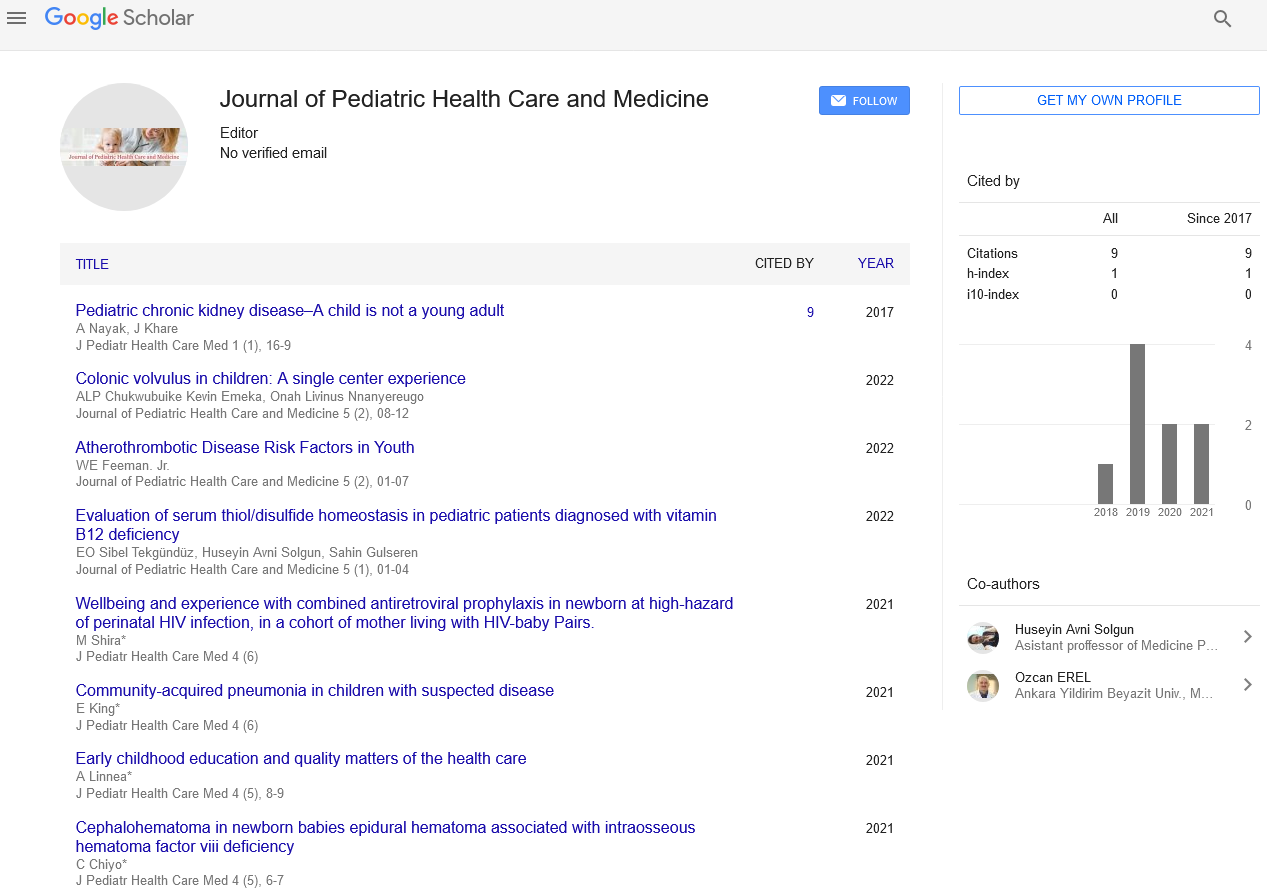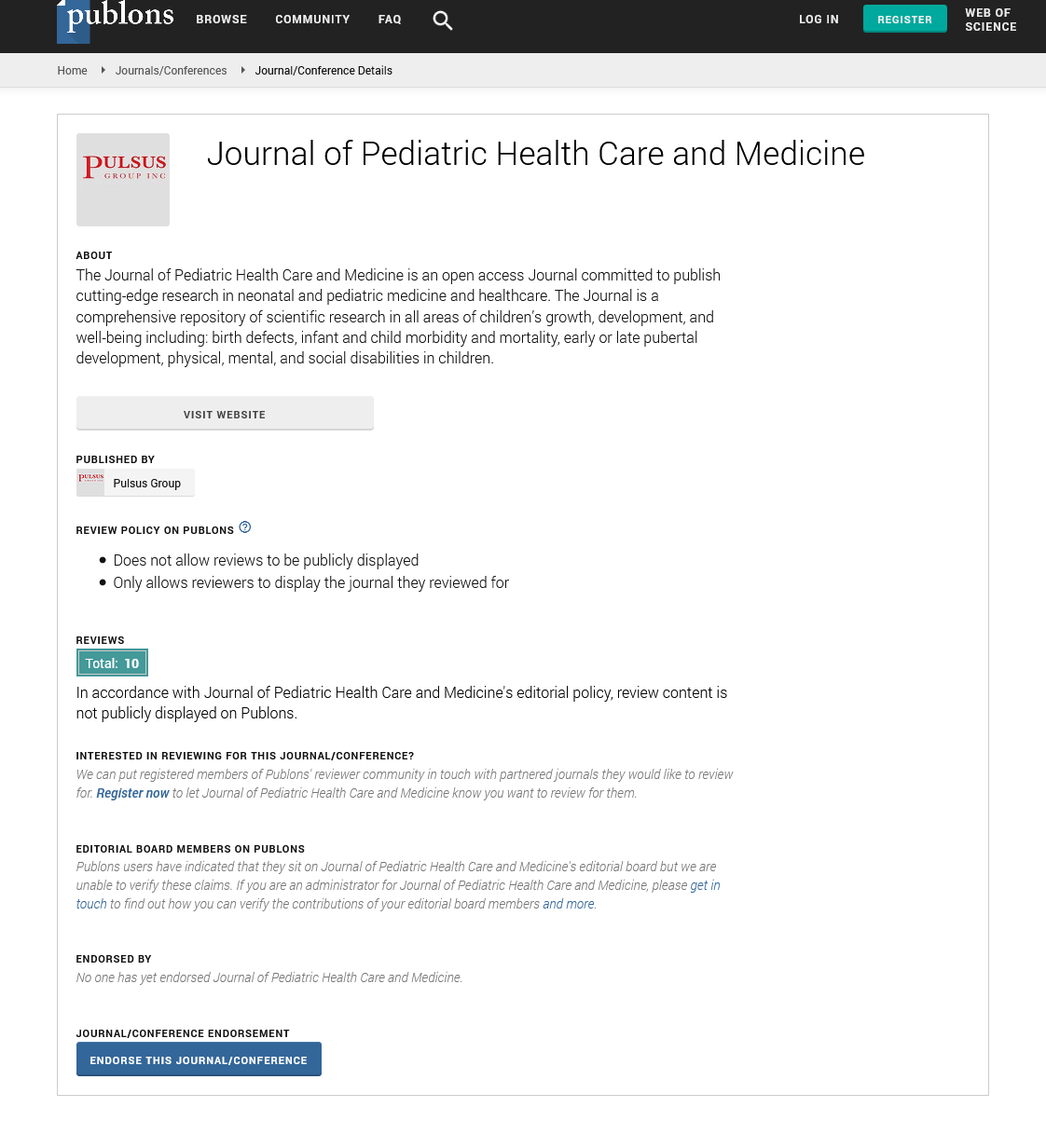Brief Note on Pediatric Oncology
#Equally contribution
Received: 25-Jun-2021 Accepted Date: Jul 12, 2021; Published: 20-Jul-2021
Citation: None
This open-access article is distributed under the terms of the Creative Commons Attribution Non-Commercial License (CC BY-NC) (http://creativecommons.org/licenses/by-nc/4.0/), which permits reuse, distribution and reproduction of the article, provided that the original work is properly cited and the reuse is restricted to noncommercial purposes. For commercial reuse, contact reprints@pulsus.com
Abstract
Malignant growth is a sickness whose movement is driven by a progression of aggregating hereditary and epigenetic changes impacted by genetic components and the substantial climate. These progressions bring about singular cells obtaining an aggregate that furnishes those phones with an endurance advantage over encompassing ordinary cells.
Abstract
Malignant growth is a sickness whose movement is driven by a progression of aggregating hereditary and epigenetic changes impacted by genetic components and the substantial climate. These progressions bring about singular cells obtaining an aggregate that furnishes those phones with an endurance advantage over encompassing ordinary cells.
Keywords
Childhood cancer, Transformation, Genetics
Introduction
Disease in youngsters is extraordinary—it addresses just about 2% of all malignant growth cases. All things considered, after injury, it is the second most normal reason for death in youngsters more seasoned than 1 year old enough. Roughly 130 new instances of disease are recognized every year per million kids more youthful than 15 years old (around 1 out of 7,000). In this manner, the yearly occurrence of malignant growth in the United States is around 9,000 youngsters more youthful than 15 years age, with another 4,000 patients being determined to have disease between the ages of 15 and 19 years.1 The rate of disease is most noteworthy among kids in their initial three years of life and afterward leisurely decays until age 9. From that point forward, the rate then, at that point consistently increments again through youthfulness making a second pinnacle occurrence.
Albeit every particular tumor type displays an alternate age-dissemination design, generally, leukemia is the most well-known type of disease in kids; mind tumors are the most widely recognized strong danger of youth. Lymphomas are the following most normal harm in kids, trailed by neuroblastoma, delicate tissue sarcomas, Wilms tumor, germ cell tumors, osteosarcoma, and retinoblastoma, with every one of these sorts of disease contributing between 3% to 8% of the all-out number of malignancy cases in kids more youthful than 15 years. A somewhat extraordinary conveyance is seen among 15-to 19-year olds, in whom Hodgkin infection and germ cell tumors are the most oftentimes analyzed malignancies, and in whom nonHodgkin lymphoma, non-rhabdo myosarcoma delicate tissue sarcoma, osteosarcoma, Ewing sarcoma, thyroid disease, and melanoma each happen with an expanded rate.
During typical turn of events, cells advance to perform exceptionally particular capacities to meet the physiologic necessities of the living being. Improvement and development include firmly directed cycles that incorporate proceeded with cell expansion, separation to specific cell types, and modified cell demise (apoptosis). A mind boggling arrangement of balanced governance guarantees legitimate power over these physiologic cycles. The hereditary piece (genotype) of a cell figures out which pathway(s) will be continued in applying that control. The nearby milieu likewise assumes a pivotal part in affecting cell destiny. Cells utilize complex sign transduction pathways to detect and react to adjoining cells and their extracellular environmental elements.
Adjustment or inactivation of any of the parts of ordinary cell administrative pathways may prompt the dysregulated development that isthe sign of neoplastic cells.
Dangerous change might be described by the disappointment of cells to separate or cell dedifferentiation, expanded intrusiveness and metastatic limit, and diminished medication affectability. Tumorigenesis mirrors the aggregation of abundance cells that outcomes from expanded cell multiplication and diminished apoptosis or senescence. Malignant growth cells don't duplicate more quickly than ordinary cells, however they show reduced responsiveness to administrative signs. Positive development signals are produced by proto-oncogenes, so named on the grounds that their dysregulated articulation or initiation can advance threatening change. These proto-oncogenes may encode development factors or their receptors, intracellular flagging atoms, and atomic record factors . Then again, tumor silencer qualities, as their name suggests, control or confine cell development and expansion.
Malignant growth cells convey DNA that has point transformations; viral inclusions; or chromosomal or quality intensifications, erasures, or adjustments. Every one of these abnormalities can change the unique situation and cycle of ordinary cell development and separation. Despite the fact that genomic unsteadiness is an innate property of the transformative interaction and ordinary turn of events, it is through genomic precariousness that the dangerous change of a cell may emerge. This intrinsic unsteadiness might be sped up by acquired elements or openness to destabilizing components in the climate.
Hereditary anomalies related with malignancy might be identified in each cell in the body or just in the tumor cells. Established or germline anomalies are either acquired or happen anew in the germ cells. Strangely, notwithstanding the presence of an established hereditary anomaly that may influence development administrative pathways in all cells, individuals are by and large inclined to just certain tumor types. This selectivity features the perception that quality capacity adds to development or advancement just inside a specific milieu or physiologic setting.
Conclusion
It has particularities when contrasted with grown-up MS particularly in youthful and pre-pubertal youngsters. Intellectual hindrance is very regular in youngsters with MS, which requires explicit administration. The investigation of pediatric MS would assist with bettering comprehend the pathophysiology of the illness taking into account the brief time frame between the imaginable triggers what's more, the beginning of the sickness.






